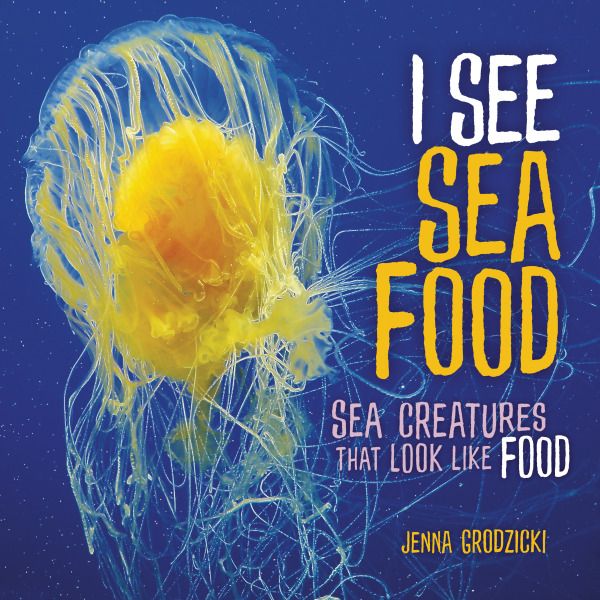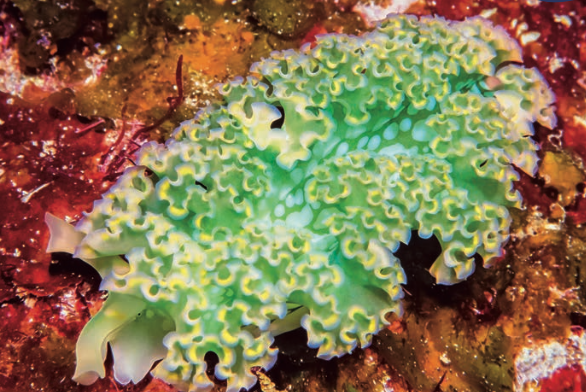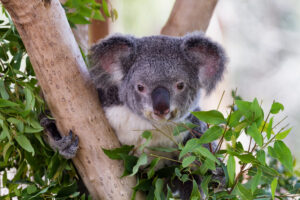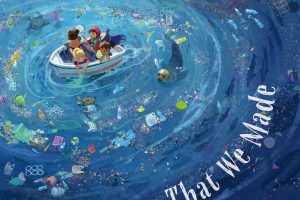
GUEST BLOGGER JENNA GRODZICKI
I See Sea Food: Sea Creatures That Look Like Food introduces the reader to sea animals that actually look like foods we eat. The playful text combined with the brightly colored photographs are sure to wow students. That makes this book an ideal choice to help students understand the idea of physical adaptations and possibly inspire some creative writing.

Introducing adaptations
Introduce the term “adaptations” and explain the two types. Have the definitions already written on the chart paper.
- Physical Adaptations – special body parts that help plants and animals survive in their environment.
- Behavioral Adaptations – actions or behaviors that help plants and animals survive in their environment.
Tell the students that today you’re going to focus on physical adaptations using the book, I See Sea Food: Sea Creatures that Look Like Food.
For this adaptations lesson, you will need:
- Chart paper and markers
- copy of I See Sea Food: Sea Creatures That Look Like Food
- Paper and pencils
- Enlarged photographs of a pufferfish (both normal and inflated), leafy sea dragon, and great white shark with sharp teeth on display
Adaptations chart
Ask students to share the different types of physical adaptions the animals have and why they have them. Make a table on the chart paper to organize their thinking. It might look something like this.
| ANIMAL | ADAPTATION | REASON |
| Australian pineapplefish | armored scales (scutes) | protection from predators |
| Chocolate chip sea star | pointy horns | protection from predators |
| Banana wrasse | females have yellow scales | easier to find mates |
| Lettuce sea slug | ruffled leaves (parapodia) | provides food |
| Louisiana pancake batfish | shape and coloring | provides camouflage |
| Sea apple | shape | escape from danger |
| Cauliflower jellyfish | large, curly arms | provides food |
| Pizza crust sea slug | round bumps (tubercles) | provides camouflage |
Extended thinking
Organize the students into small groups. Pass out paper, pencils, and the photographs ( pufferfish (both normal and inflated), leafy sea dragon, and great white shark with sharp teeth on display). Tell the students to discuss what each of these animals look like, what they think the adaptations are, and possible reasons for each adaptation. Have them record their thinking on the paper.
Once each group has finished, come back together as a whole class. Call on volunteers to share what their group thought about each animal’s physical adaptation and possible reasons for it.

Challenge: Invent Your Own Sea Creature
For students looking for a challenge, ask them to invent their own sea creature that looks like food. Have them draw a picture of this new animal and write about why it looks the way it does. What adaptation does it have? What does this adaptation do?
Further Reading
- What Makes a Monster?: Discovering the World’s Scariest Creatures by Jess Keating, illustrated by David DeGrand
- Pipsqueaks, Slowpokes, and Stinkers: Celebrating Animal Underdogs by Melissa Stewart, illustrated by Stephanie Laberis
- Creature Features: 25 Animals Explain Why They Look the Way They Do by Steve Jenkins and Robin Page
- Glow: Animals with Their Own Night-Lights by W.H. Beck

Jenna Grodzicki loves researching and writing about weird and wonderful animals. During her fifteen years as an educator, she saw firsthand how young readers connected to these types of nonfiction books. Jenna has a Bachelor’s Degree in Elementary Education from Boston College and a Master’s in Education from the University of New England. In addition to I SEE SEA FOOD: SEA CREATURES THAT LOOK LIKE FOOD (Millbrook Press), she is the author of FINN FINDS A FRIEND (Clear Fork Publishing), PIXIE’S ADVENTURE (eTreasures Publishing), and the forthcoming HARMONY HUMBOLT: PERFECT PETS QUEEN (Clear Fork Publishing). Visit her online at www.jennagrodzicki.com or on social media @jennawritesPB on Twitter and Instagram.








Leave a Reply
Your email is safe with me.